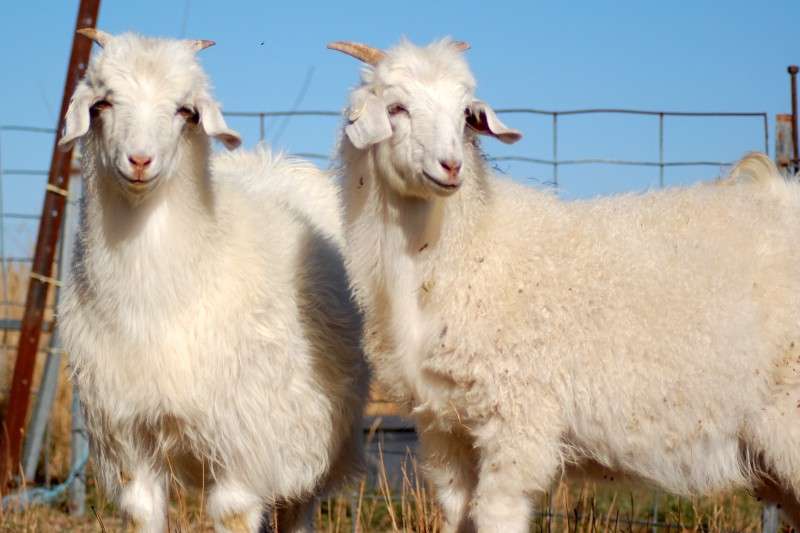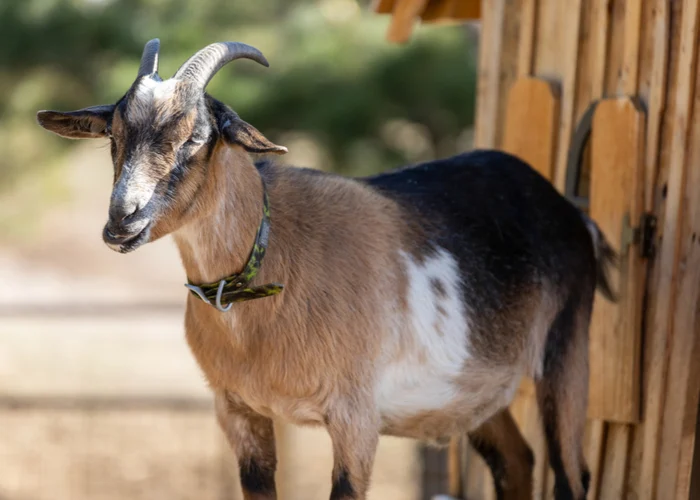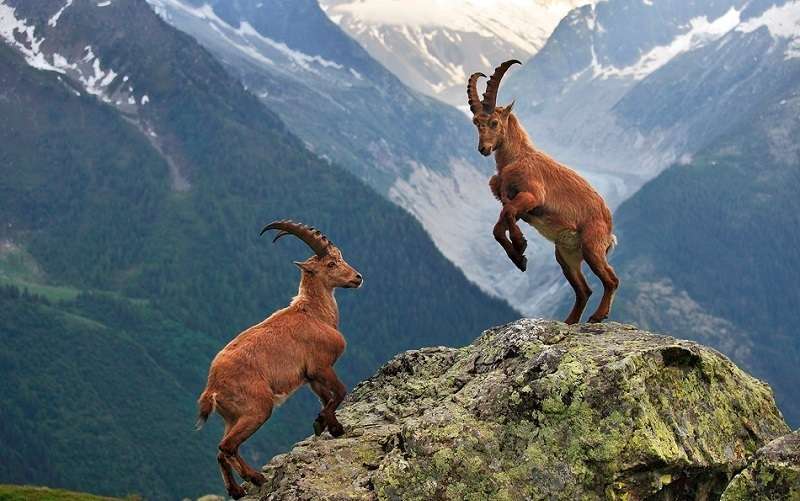
Description:
Solid, powerful, well-muscled, and proportionate. Midwinter has a lengthy, rich undercoat overall. Horns are advantageous because they dissipate heat in hot weather, which is crucial for developing a thick coat of fur.
Behavior:
They are sociable animals that congregate in herds of four to one hundred individuals. Since there are numerous breeds of cashmere, there is no “typical” behavior. Each breed differs from other Cashmere breeds and exhibits unique traits.
Nonetheless, this breed frequently exhibits a few similar characteristics. For instance, because most Cashmere goats are closer relatives to feral goats than to domesticated goats, they are less sociable than most. They have a tendency to be rather apprehensive of people, particularly when being handled. They are less submissive than some others.
Gentle handling from an early age is advised since animals that are simple to handle are preferred. Vigilance and quick thinking are crucial qualities for herds that are allowed to roam freely.
Benefits/Uses:
The main purpose of cashmere goats is to produce cashmere wool. Certain Cashmere goats are also good for producing meat, milk, or skin.
Origin/History:
Long before the British colonized Australia, Dutch and Portuguese navigators freed goats from the islands off the coast of Australia. The goats that were brought came from a wide range of origins and adapted quickly to the Australian environment. The animals on the hills in the background of pre-1830 images of early Australia are almost always depicted as goats. There have been some early attempts to grow the goat-fleece sector in Australia. Animals from the “Angora-Cachemire” breed were brought to William Riley’s property in Raby, New South Wales, in 1832. He presented a report to the Agricultural and Horticultural Society of New South Wales in that year in an effort to promote the growth of an Australian Cashmere/Angora fleece industry. Australian graziers took an additional 150 years to develop some of his ideas. W. Tanner of Caversham advertised young half-bred Cashmere bucks for sale at three pounds each in the “Colonial Paper” of Western Australia in 1832.
The fledgling goat industry most likely died during the gold rush era. Sheep, goats, and other grazing animals were managed by shepherds before the gold rush. Most chose to leave their charges in favour of finding riches on the gold fields. The landowners were subsequently forced to try to fence their runs. Sheep would stay on the wide plains in big ranges without fences, but crude fences could be built to keep them under control. The enormous herds of wild (or bush) goats that were firmly established in much of interior Australia’s landscape were formed by the goats’ aggressive pursuit of the harder terrain as their browsing environment. The goats were not restrained by fences. These herds were eventually driven back into the semiarid, sparsely populated regions of the country by the expansion of urbanization.
Goats have been mentioned frequently in history over the years in Australia. Goat herds that roamed Sydney’s streets in 1879 caused such a disturbance that police intervention was needed to remove them. At the turn of the century, goat racing—in which goats were driven by young people in light gigs—became quite popular, especially in Queensland. Dame Nellie Melba, a well-known opera singer, was so moved by the spectacle at Rockhampton, Queensland, that she organized the Melba Derby.
Keeping as Pet:

- Feeding and Nutritional Needs
Goats used for cashmere are low-maintenance creatures that just need the most basic of care. They thrive in intensive or rotational grazing systems because they are natural browsers.
- Housing and Fencing
For protection from harsh weather and predators, goats require a shelter without draughts. A sturdy goat fence, such as three-strand electric wire or cattle panels, is also a wise investment because it will shield your property from irate neighbours as well as predators that are goat-hungry.
- Grooming
The two procedures for obtaining down fiber are combing and shearing. To separate the guard hairs from the down fiber if you decide to shear the coat, you will require a commercial dehaired. Once every year, usually between late December and early March, cashmere goats are sheared or combed. The down can be harvested within this window of time, after it has ceased growing but before the goats begin shedding their winter coat. Every 4-6 weeks, Cashmere goats require their hooves to be trimmed in addition to combing and shearing.
Table





